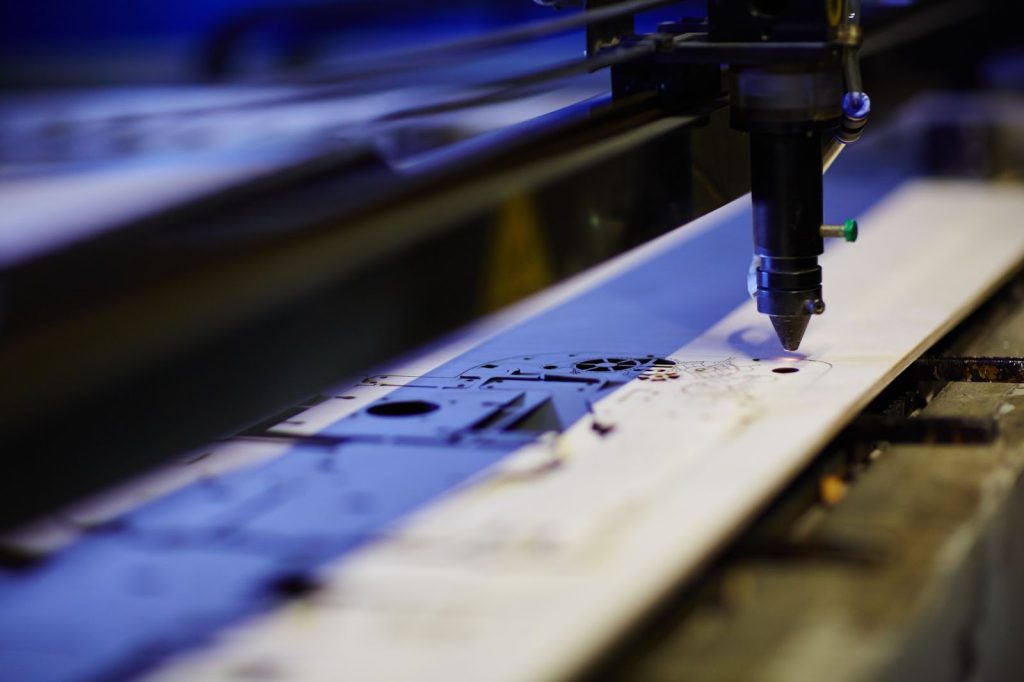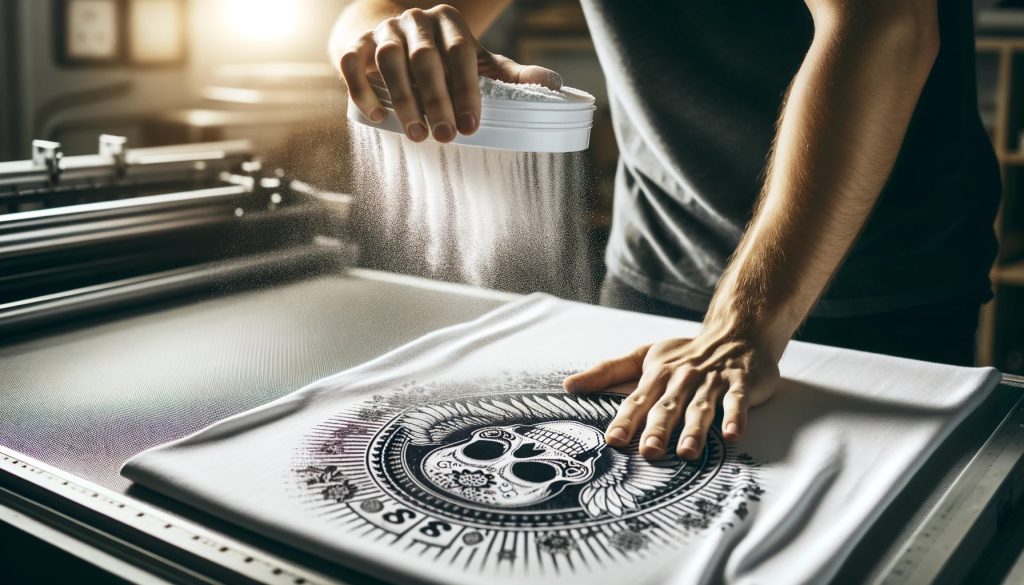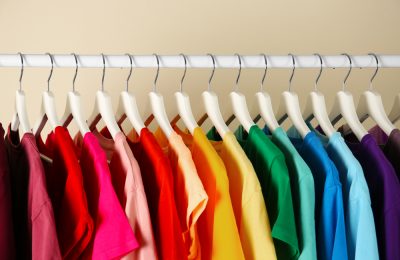|
Getting your Trinity Audio player ready...
|
What Is DTF Printing?
Without a doubt, Direct to Film (DTF) printing is a cutting-edge printing technique that has gained widespread popularity in the garment decoration industry. This remarkable method involves a unique process of printing designs onto a special type of film and then transferring those designs onto a variety of fabrics.
The process of DTF printing involves;
Firstly, a specialised inkjet printer prints the design onto a clear PET film using a specific type of ink formulated for DTF printing. After printing, an adhesive powder adheres to the ink on the printed side of the film.
Next, the film, with the design and adhesive powder, undergoes a curing process that usually involves a heat press or an oven. This process melts the powder and binds it to the ink. In the final step, the print is transferred from the film onto the fabric.
To do this, the film is placed on the fabric, design side down, and subjected to heat and pressure, typically using a heat press machine. This heat activates the adhesive, which bonds the ink to the fabric.
Finally, after the heat press, the film is peeled off, leaving the ink design adhered to the fabric.
Applications of DTF printing
Direct to Film (DTF) printing, with its unique and versatile technology, has a broad spectrum of applications, especially in the textile and garment industry.
| Key Areas of DTF Printing Usage | Description |
| Custom Apparel Production | DTF printing creates custom designs on various apparel items, such as t-shirts, polos, singlets, hoodies, coats, and jackets. It delivers high-quality prints with vibrant colours and fine details suitable for personal or commercial use. |
| Fashion Industry | Designers leverage DTF printing to incorporate intricate patterns and graphics into their clothing lines. This technique facilitates the production of small, customised batches, which is beneficial for boutique fashion lines or limited-edition pieces. |
| Promotional Merchandise | DTF printing is favoured for crafting promotional items such as branded t-shirts, caps, belts, masks and bags. Businesses utilise this method to produce branded apparel in varying quantities, catering to marketing needs. |
| Sportswear and Team Uniforms | DTF printing finds application in creating durable sports jerseys, team uniforms, and athletic wear. The prints withstand physical stress and frequent washing, making them suitable for sports-related apparel. |
| Workwear and Corporate Uniforms | Companies employ DTF printing to produce uniforms and workwear adorned with company logos and branding. This method, compatible with diverse fabrics, ensures the longevity of branding on corporate apparel. |
| Event and Band Merchandise | Bands, events, and festivals use DTF printing to create unique merchandise, including t-shirts, hats, and bandanas, quickly and efficiently producing high-quality commemorative apparel for promotional purposes. |
| Custom Fashion Accessories | DTF printing extends beyond clothing to fabric-based accessories such as scarves, ties, and handkerchiefs. It offers personalised design options, enhancing the creative appeal of fashion accessories for individuals. |
| Home Decor | DTF printing is applied in decorating home furnishings like pillow covers, curtains, and upholstery with custom designs and patterns. This adds a personalised touch to home decor, allowing for creative expression in interior styling. |
What are the Pros & Cons of DTF Printing?
Direct-to-film (DTF) printing, like any other printing technology, has advantages and challenges. Understanding these is important to determine whether it’s the right choice for your printing requirements.
Let’s take a closer look at the pros and cons of DTF printing.
Pros of DTF Printing
- Possibilities of Versatile Fabric Choices
DTF printing works on multiple variety of fabrics, including cotton, polyester, silk, and blends, making it more versatile than some other printing methods like DTG (Direct to Garment Printing).
- High-Quality and Durable Prints
The prints from DTF are known for their vibrancy, sharpness, and colour accuracy. They also have excellent wash durability, resisting fading over time.
- No Pre-treatment is Required
Unlike DTG printing, DTF doesn’t require the fabric to be pretreated before printing, which simplifies the process and reduces production time.
- Adapt to Changing Needs with Flexibility in Quantity
DTF is suitable for both small-scale and large-scale production runs, offering flexibility for businesses and individuals.
- Pretty Much Ease of Customisation
It allows for easy customisation of designs, which is ideal for producing unique and personalised items.
- Groovy with Productivity
DTF streamlines the production process, allowing quicker turnaround times than traditional printing methods like screen printing.
Cons of DTF Printing
- Initial Equipment Investment
The initial setup for DTF printing can be costly. It requires specific printers, films, powders, and a heat press, which can be a significant investment, especially for small businesses.
- Technical Learning Curve
Getting the best results from DTF printing involves a learning curve, particularly in mastering the nuances of the printing process and heat transfer.
- Maintenance Requirements
The printers and equipment used in DTF printing require regular maintenance & cleaning to function properly, which can add to the operational costs.
- Print Texture and Hand Feel
The feel of the print on the fabric can be different compared to other methods like screen printing. Some may find the texture of the print layer to be thicker or less flexible.
- Environmental Considerations
Like many printing processes, DTF printing involves chemicals and consumables that may have environmental impacts. It’s important to manage waste and use eco-friendly options where possible.
- Limited to Flat Surfaces
DTF printing is primarily suited for flat fabric surfaces and may not be as effective for items with lots of seams or irregularities.
What Tools are Required for DTF Printing?
When setting up a DTF printing operation, you’ll need a specific set of tools and materials to transfer designs onto fabric successfully. Here’s a list of the essential items required.
| Essential Items for DTF Printing |
| DTF Printer |
| Ø A specialised inkjet printer can handle DTF inks and print on DTF films. |
| Ø It should be equipped to handle the specific ink types used in DTF printing. |
| DTF Inks |
| Ø Special water-based inks used in DTF printers. |
| Ø Typically include CMYK (Cyan, Magenta, Yellow, and Key/Black) colours along with white ink, crucial for printing on darker fabrics. |
| PET Films |
| Ø Films on which the design is printed. |
| Ø Made of PET (Polyethylene Terephthalate) for its ability to hold ink and adhesive powder. |
| Adhesive Powder |
| Ø Applied after printing the design on the film. |
| Ø Melts during heat pressing help bind the ink to the fabric. |
| Heat Press Machine |
| Ø Transfers the design from the printed film onto the fabric. |
| Ø Heat and pressure activate the adhesive, allowing the design to adhere. |
| Shaking/Drying Unit |
| Ø Some DTF setups include a machine to distribute and melt adhesive powder onto the printed film. |
| Ø It also helps dry the ink before heat transfer. |
| Software for Design |
| Ø Graphic design software to prepare and process designs for printing. |
| Ø Should be compatible with the printer and capable of handling detailed colour work. |
| Cutting Tools |
| Ø For trimming printed films to size, if necessary. |
| Cleaning and Maintenance Supplies |
| Ø Regular cleaning and maintenance are essential for optimal printer performance. |
| Ø Includes cleaning solutions and tools for printer heads. |
| Workspace |
| Ø A clean, dust-free, well-ventilated area to house equipment and carry out printing and heat-pressing processes. |
Image Credit: GJS
What are the Custom Printing Steps of DTF Printing?
Custom printing using Direct to Film (DTF) technology is a multi-step process that involves creating a design, printing it onto a special film, and then transferring it onto fabric. This method allows for high-quality, detailed, and colourful prints on various textiles.
Here’s an overview of the process:

Step 1: Design Creation
a) Artwork Preparation
Firstly, to create or select a design using graphic design software. This design can be a logo, artwork, text, or any graphic that needs to be printed.
b) Colour Management
Ensure the colours in your design are correctly calibrated for printing. This might involve using specific colour profiles to match the DTF printer’s capabilities.
Step 2: Printing the Design

a) DTF Printer Setup
Use a DTF-specific printer, generally an adapted inkjet printer capable of handling DTF inks and films.
b) Ink and Film Loading
Load the DTF printer with DTF inks (CMYK and white ink) and PET film.
c) Printing Process
Print the design onto the PET film. The printer first lays down a layer of white ink (for opacity and vibrancy on darker fabrics), followed by the coloured ink.
Read More : Your Guide to Colour Separating for Custom T-Shirt Printing
Step 3: Applying Adhesive Powder

a) Powder Application
After printing, apply a layer of adhesive powder to the printed side of the film. This powder will bond the ink to the fabric.
b) Melting the Powder
Use a heat source (like a shaker or oven) to melt the powder slightly, ensuring it adheres to the ink.
Step 4: Transferring the Design

a) Pre-Heating the Fabric
If required, pre-heat the fabric using a heat press to remove moisture and wrinkles, which ensures a clean transfer.
b) Heat Pressing
Place the film onto the fabric, with the printed side facing down. Use a heat press machine to apply heat and pressure. This process activates the adhesive, transferring the ink from the film to the fabric.
c) Peeling Off
Once the pressing is done and the fabric has cooled down to a certain extent, peel off the film. The design will now be adhered to the fabric.
Step 5: Finishing

a) Final Curing
Sometimes, a final press is done to cure the print, ensuring its durability and washability.
b) Quality Check
Inspect the final product for any issues or defects.
Get a Practical Glimpse
Conclusion
In conclusion, DTF printing technology has revolutionised the custom apparel and textile design industry, providing cost-effective and practical solutions for small to medium-sized production runs. It specialises in producing vibrant, high-quality prints on various textiles, and its relative ease of use makes it an excellent alternative to traditional printing methods like screen printing. With its growing popularity, it is safe to say that DTF printing technology is up to stay and to push the boundaries of custom apparel and textile design for years to come.
Suggested Reads:
- How to Make a Screen for Screen Printing: A Step-by-Step Guidelines
- What is Dye Sublimation? The Future of Printing Technology
- Why You Should Use DTG Digital Printing
Picture Credit: Freepik





